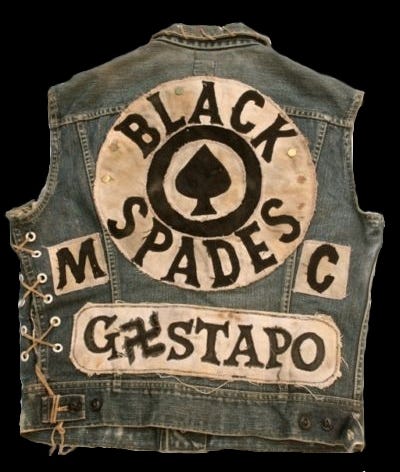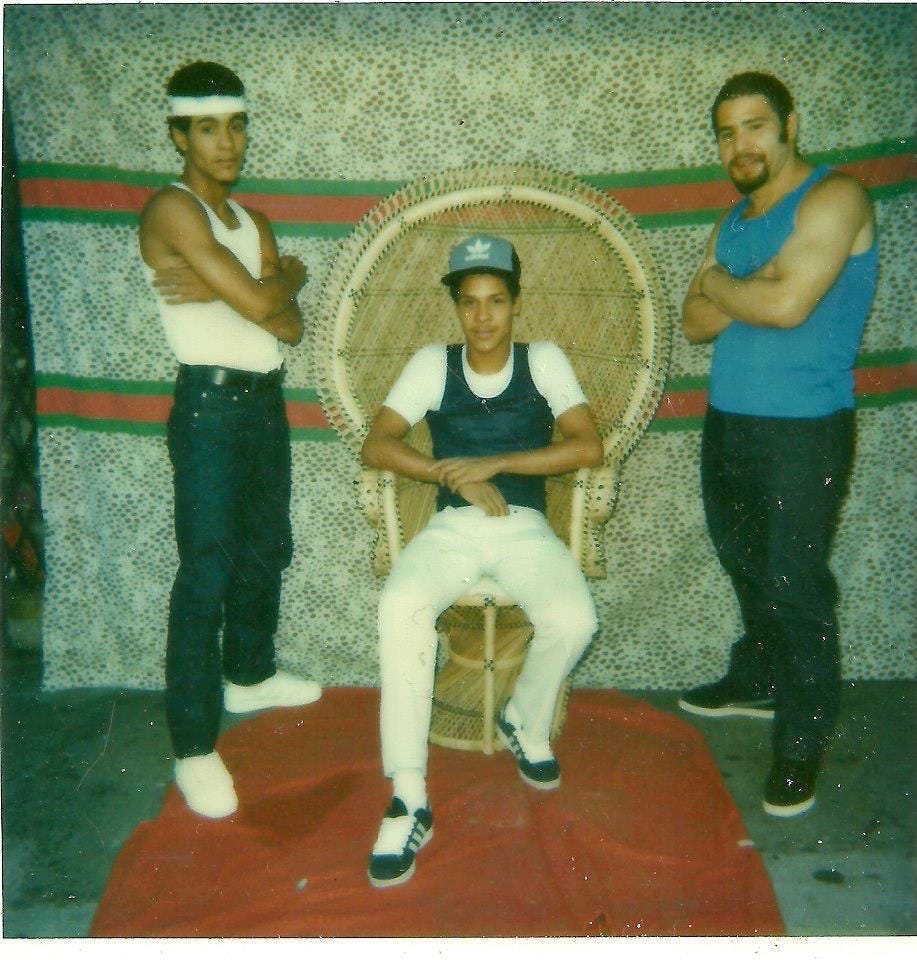A HISTORY OF BREAKING - PART 2
1975 - 78
Before I start, I’ve realised that despite what I said in Part 1, it’s wrong to only isolate this history to the West and South Bronx, and actually I’m going to touch on some crews more to the East and North East of the borough here. We’ll also be stepping outside of the Bronx a little when we get to the late 70s and early 80s. Just wanted to clear that up. There’s also a trigger warning that I will be talking about sexual assault at the end of this chapter.
In 1973 the New York Post reported that there were 130 different gangs in the South Bronx area alone with nearly 10,000 members between them. The biggest gang in the whole of New York at the time were the Black Spades, however by the mid 70s, numbers for all of the gangs had started to dwindle considerably. Factors that may have played a part in this include: the work of the Youth Gang Task Force; and the effects of mass heroin addiction, despite efforts by some gangs (particularly those influenced by the Nation Of Islam) to remain anti-drugs. There were also the deaths of Soulski, the president of the Black Spades 10th Division and Meathead Ron from the 17th Division. Both were shot and killed by police officers in January 1975. The president of the 22nd Division, Wildman, was also shot but survived.
I’ve seen a number of interviews with former Black Spades members saying that the gang’s signature ‘Spade Dance’ was a big influence on breaking. Certainly there were a number of breaking and hip hop pioneers that were originally Black Spades. The most famous being Afrika Bambaataa, who originally joined the Young Spades before graduating to the war council of the 1st Division, 1st Chapter in Bronxdale Houses. The president there was DJ Kool Dee, another hip hop pioneer, who before moving to The Bronx was a DJ with Fantasia Sounds in Brooklyn. Bambaata then moved to the 10th Division in Bronx River Houses.
Although the Black Spades never fully dissolved, many chapters broke off and formed their own smaller crews. From the 1st Division, DJ Kool D created the KD Crew, whilst Disco King Mario, another largely unsung hip hop legend from the division, formed the Chuck Chuck City Crew. Both of these would focus their efforts into the Bronx’s burgeoning party scene.
Most famously, after Soulski’s death, Bambaataa created the Organisation with members of the 10th Division. From this came the Zulu Kings, which many agree to be the first organised breaking crew. Although as we’ve already discovered, there had been loose crews previously. The original members of the Zulu Kings are: Kusa Stokes, Ahmad Henderson, Shaka Reed, Aziz Jackson and Zambu Lanier. Somewhat confusingly the official birth date of the Zulu Kings is November 12th 1973, just over a year before Soulski is shot. I’ve not been able to find the official reasoning for that, and there is some suggestion online that this was originally celebrated as being 3 years later. Which makes sense, as I’ve seen November 12th 1976 told to be the date that Afrika Bambaataa first started to DJ at the Bronx River Community Centre. This also seems to be around the time that the Zulu Nation name becomes publicised. All this said, if you go back through the various anniversary flyers of the Zulu Nation to try and figure it out, you’re guaranteed to come out with nothing but a headache.
The next recorded members of the Zulu Kings are Beaver, Robbie Rob, Cholly Rock, Swane, Pow Wow, Marcus Rockwell, Jazzy Jay, Sundance, Little Keith, Afrika Islam and G.L.O.B.E. It’s these names which are regularly cited as being a direct influence on the next generation of breakers, the ones who would go on to formalise the craft and take it around the world. The Zulus are credited with bringing in funkier floorwork and introducing moves such as headspins and backspins (I should also give a mention here to offshoots such as the Shaka Zulus, and the Zulu Queens) . Some names might be recognisable to older hip hop heads as DJs and MCs. In fact a lot of early hip hop DJs and MCs started out as breakers.
Grandmaster Flash is one of the more famous ones. He was in a little crew of respected breakers which included Mean Gene (later of the L Brothers with his brother Grand Wizzard Theodore), EZ Mike aka Black Mike who is a lifelong friend and associate of Flash’s, Profile a.k.a. Black Jerry, and Bumpy Face Melvin. It was through going to these early jams as a breaker, with DJs such as Disco King Mario, Pete DJ Jones, DJ Kool Dee, Grandmaster Flowers and of course Kool Herc, that Flash was inspired to take up the decks.
There has been much romanticising about this period, and you’d be forgiven for believing that all of a sudden nobody was fighting and everybody settled their problems by dancing. Of course this isn’t true, and not all of the crews that formed from the earlier gangs were breakers and DJs. That said there does appear to have been at least a contingent of breakers in most of them. One large crew of ex Black Spades called the Casanovas were apparently known for their breaking, and after originally causing problems at Flash’s first proper residency, a club called the Black Door around 1976, they became his full time security.
Another regular crew at Flash’s events were the D-Squad, with Fuji, Flippin' Mike, Melle Mel, Kidd Creole and Mr. Ness aka Scorpio. Three of whom would later find fame with Grandmaster Flash as part of the Furious 5.
By the summer of 1977, hip hop’s foundational “B-Beats” scene was starting to kick off properly. Herc’s reputation was strong, and Afrika Bambaataa and Grandmaster Flash were both making names for themselves. DJs were noticeably digging for records that would keep the breakers happy, and buying two copies so they could extend the best bits (traditionally this was the drum break). This kicked into extra gear when there was a blackout across New York in July. The looting which took place on the 13th and 14th is credited with an influx of DJ equipment and new budding DJs in the area.
It’s also around this time (76-77) that some of the seminal Puerto Rican breaking pioneers appear. Crews such as The Bronx Boys,The Rockwell Association, Crazy Commanders, Starchild LaRock and The Disco Kings. These crews were influenced by their Latin hustle and rocking predecessors such as Salsoul Crew, but also by the likes of the Zulu Kings and the other primarily black breaking crews. They would also be dancing to the classic breaking funk favourites.
By the end of 1978 breaking had largely died out, though the B-Beats scene and hip hop’s first DJs were still going strong, laying down the foundations for hip hop and rap music. A year later though and the next generation would pick up the torch and take breaking to a whole new level.
I’ll pick that story up in the final part, however as I’ve talked a fair bit here about Afrika Bambaataa and shall continue to do so next time, I wanted to address the allegations against him.
At least 5 men have come forward since 2015, claiming that Bambaataa groomed and assaulted them when they were between the ages of 9 and 16. In 2021 he was sued by an anonymous claimant who says he was abused as a minor between 1991 and 1995, including being ‘passed round’ to other abusers. The case is still ongoing.
Afrika Bambaataa has been built into a cult-like figure over the years, and although he has been removed from the Mighty Zulu Nation it has rightfully left many sour feelings over the affair. His history has become synonymous with the birth of hip hop, as I shall explain further in the next part, and he was noticeably absent from the 50th Anniversary celebration last year, save for a few mentions as one of the founding fathers of the culture. The allegations were largely swept under the carpet.
Due to New York’s statute of limitations, child sexual abuse victims are unable to pursue criminal charges after their 23rd birthday, and Bambaataa has denied all allegations. He has few still willing to defend him in public however, and the lack of support by close associates is damning. I don’t fully subscribe to the founding fathers narrative of hip hop, though you could be forgiven for thinking otherwise here. It’s such a strongly imprinted narrative, it’s hard to stray too far when telling the history. I also don’t believe you should support somebody who will abuse the power you might create for them. That said, it’s also impossible not to mention him when discussing the birth of breaking, so it’s important for me to give you this information. Make of it what you will.
I will be putting out my regular newsletter tomorrow, but shall pick up the final part of this history before the Olympic Breaking contests start!




Thank you Kaptain, very well written and informative, a few names missing such as Spy and Batch but very well informed. Can't wait for the next installment.
Leigh Davies